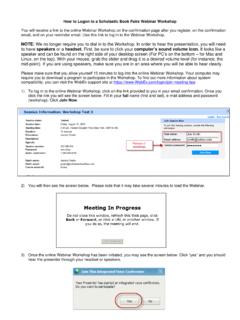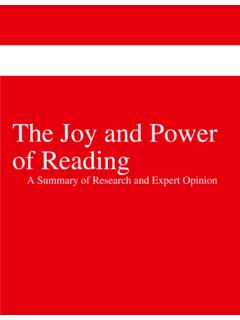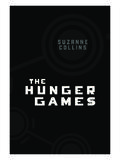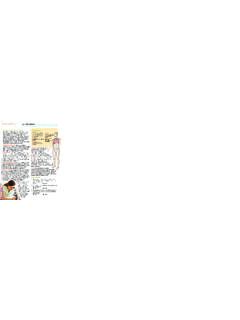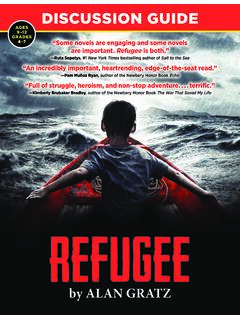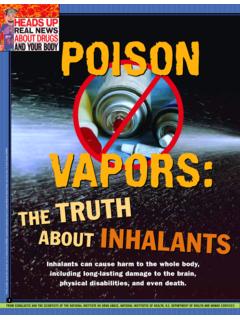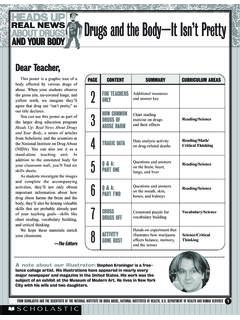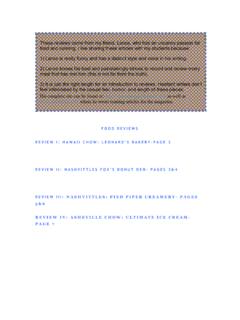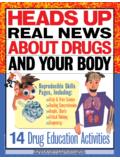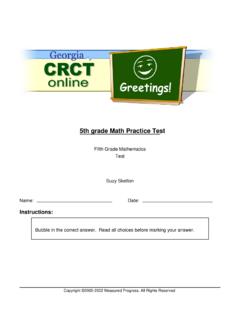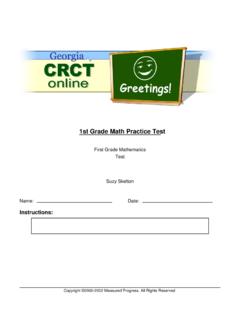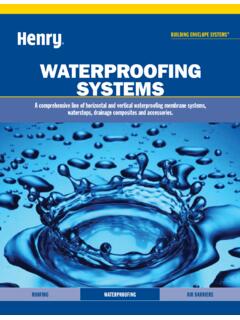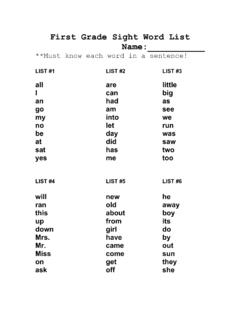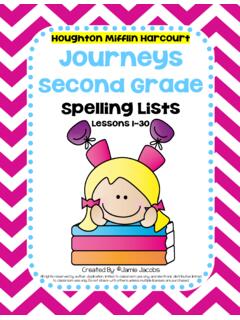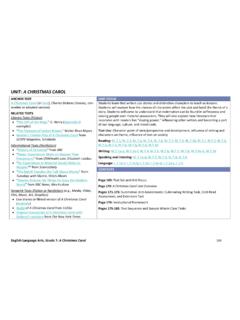Transcription of Grade 3 Grade 4 Grade 5 OVERVIEW - Scholastic
1 TEACHER GUIDE 1 2012 SI ALL RIGHTS RESERVEDT eaching the Book Henry dreams of freedom from slavery and injustice. When his family is sold away from him, he risks everything to do what he knows is right. He mails himself to freedom! This Caldecott Honor Book gives students the opportunity to make connections between the text and the illustrations in this power-ful true story. Activities engage students in writing a short play based on the book, tracing Henry s route on Google Earth, and learning how to follow the Drinking Gourd. Subject Focus: Underground RailroadComprehension Focus: Make Connections Be-tween Text and IllustrationsLanguage Focus: Academic and Domain-Specific VocabularyBook SummaryHenry Brown doesn t know how old he is. Nobody keeps records of slaves birthdays. All the time he dreams about freedom, but that dream seems farther away than ever when he is torn from his family and put to work in a warehouse. Henry grows up and marries, but he is again devastated when his family is sold at the slave market.
2 Then one day, as he lifts a crate at the warehouse, he knows exactly what he must do: he will mail himself to the North. After an arduous journey in the crate, Henry finally has a birthday his first day of Box Brown became one of the most famous runaway slaves on the Underground Railroad. His true story is retold with poetic grace by Ellen Levine, a Jane Addams Peace Award-winning author, and illustrated by Kadir Nelson, a Coretta Scott King Award-winning artist. ABOUT THE AUTHORE llen Levine was the author of fiction and nonfiction for children, young readers, and adults that focused on important social issues and historical periods. Her rigorous research and devotion to accuracy made her stories compelling. Henry s Freedom Box (a Caldecott Honor) is the true story of a slave who mailed himself to freedom; Darkness Over Denmark details the rescue of Jews by the Danes in World War II; A Fence Away from Freedom details the internment of Japanese Americans in the 1940s.
3 I first read about Henry Box Brown in William Still s 1872 book, The Underground Railroad. An 800-page volume, it con-BOOK STATSG rade Level Equivalent: 3 5 Ages: 8+Lexile Measure : 380L Pages: 40 Genre: Biography, NarrativeSubject/Theme: Underground Railroad, Slavery, and PerseveranceOVERVIEWC ommon Core State StandardsReadingWritingListening & SpeakingLanguageGrade , , , , , , book is not paginated. The first page of the story in the eBook is considered page 1 for page reference the stories of all the runaway slaves who came through Still s Anti-Slavery Society office in Philadelphia, says Ellen. I was awed by Henry s ingenious plan and his courage in undertaking it. That he built a box not even three feet square and mailed himself to freedom, seemed to me a remarkable idea; that he traveled in that box for some 27 hours with only a little water and a few biscuits, equally astonishing; that he survived to tell the tale, our great fortune.
4 Ellen Levine died on May 26, 2012. Listen to the author read from Henry s Freedom Box and then watch an interview with Ellen Levin by visiting the Scholastic website at and TEACHER GUIDEGet Ready to Read Pre-Reading Activities The Underground Railroad Tell students that they will read a story about a real man named Henry Brown who lived in the United States in the mid-1800s when many African Americans were slaves in the South. Henry was born a slave and, like other brave African Americans, escaped to freedom in the North. How did they do it? They traveled on the Underground Railroad. Ask students to volunteer what they know about the Underground Railroad. Then play the following slideshow from the Scholas-tic website at Preview and Predict Ask students to look at the cover of Henry s Freedom Box. Have them predict how Henry might escape to freedom. Vocabulary Domain-Specific Vocabulary Introduce readers to the vocabulary words, explaining that they all relate to the Underground Railroad and slavery.
5 Use Resource #1: Vocabulary Cards on page 7 and dis-tribute copies to students. Ask students to watch for the words as they read, using context clues to figure out their meanings. Also use the words as often as possible when discussing the book with students, encouraging them to use the words in their own oral and written Railroad slave master freed market stationbaggage conductor BIG QUESTIONC ritical Thinking Ask students to think about this question as they read and be ready to answer it when they have finished the book. Write the question on chart paper or have students write it in their reading does Henry decide to risk his life for freedom?STORIA ENRICHMENTSTo assess and enhance students comprehension, this Storia eBook contains a Reading Challenge Quiz, as well as the following enrichments: Picture Starter Touch the Page Scratch & See Multiple Choice With Text Word Match Sequencing Jigsaw Puzzle Multiple Choice With PicturesAs You Read Reading the Book Read-Aloud Read the book aloud with fluency and expression.
6 If possible, project the book on a white-board or screen. Pause every few pages and have students predict what might happen next to Henry. Later, stop to ask if their predictions were correct. Shared Reading Reread the book and ask students follow along. Pause on each page and ask students to study the illustrations. Encourage them to make connections between the words in the text and the pictures and colors in the illustrations. Comprehension Focus Make Connections Between Text and Illustrations The text and the illustrations in Henry s Freedom Box complement each other and tell not just Henry s story but the story of all slaves. Help students under-stand how to read an illustration for its mood and meaning and how to integrate it with the text. Proj-ect pages 4 5 on a whiteboard or screen and model for students how to connect the story detail with the illustrations. TEACHER GUIDE 3 Model: First, I m going to read the text of the story on pages 4 5 again.
7 Henry s mother says that slave children are torn from their families just like leaves are torn from trees by the wind. In the picture, I see the leaves flying in the wind. Henry and his mother look sad. They are painted in dark, shadowy colors that create a mood of sadness even though the sky is bright. The text and pictures both make me realize how sad it must have been to be a slave and worry about losing people you love. I ll write that in the col-umn to the to discuss the relationship between the illustrations and the text with students. Use the organizer on Resource #2: Make Connections Between Text and Illustrations to record the words in the text and connect them to what is happening in the illustration. After You Read Questions to Discuss Lead students in a discussion of these focus story Underground Railroad How was the Under-ground Railroad similar to a real railroad? How was it different? (Sample answers: The Underground Railroad had stations, conductors, and passengers, just like a real railroad.)
8 But the Underground Railroad did not have any trains or cars.) 2. Make Connections Between Text and Illustra-tions Look at the last two-page illustration in the book on pages 40 41. Make connections between the words on the pages and the illustration of Henry and the people in Philadelphia. (Sample answers: The men are saying, Welcome to Philadelphia! They all have happy smiles on their faces and Henry looks happy, too. The colors of the picture are brighter and the mood is happy.) 3. Domain-Specific Vocabulary Use the word freed in a sentence about your own life. (Sample answer: We are freed from school during summer vacation.) Questions to Share Encourage students to share their responses with a partner or small Text-to-Self Would you be able to stay quiet ina small crate for 27 hours like Henry did? (Answerswill vary.)2. Text-to-World Do you know of places in today s world where people are enslaved or treated unequal-ly? (Answers will vary.
9 3. Text-to-Text What is another book that you have read about the Underground Railroad? Compare how slaves escaped in that book with how Henry escaped. (Answers will vary.)WORDS TO KNOWD omain-Specific Vocabulary Explain to students that you will read them a sentence that is missing a word. Ask them to hold up the vocabulary card that correctly finishes each Many slaves escaped from the South to the North by way of the _____. (Underground Railroad)2. Families were broken apart when children were sold at the slave _____. (market)3. Henry did not know his birthday because he was a _____. (slave)4. Henry was given to the son of his _____. (master)5. Henry hoped that he might be _____ by his master. (freed)6. A person who helped slaves escape on the Underground Railroad was called a _____. (conductor)7. His friends put Henry in the box and took him to the railroad _____. (station)8. No one knew that Henry was hiding in the box with the rest of the _____.
10 (baggage)4 TEACHER GUIDEBIG QUESTIONC ritical Thinking Give each student an opportunity to answer the big question. Encourage students to support their answers with details and evidence from the text. Tell students there is more than one right answer. Why does Henry decide to risk his life for freedom?Extension Activities Reading/Writing Connection Write a Play Script Challenge students to turn the story of Henry s Freedom Box into a short play. Pair students with a partner to write a script. Sug-gest that students choose five or six scenes from the book that tell Henry s story. Then ask them to write Content Area Connections Science The North Star The goal of escaping slaves was to go North where they could be free. Challenge stu-dents to learn more about the North Star that guided slaves on their journey to freedom. Suggest that they research the group of stars that helped people find the North Star and report on what the constellation looks like and what it was called by the slaves.
